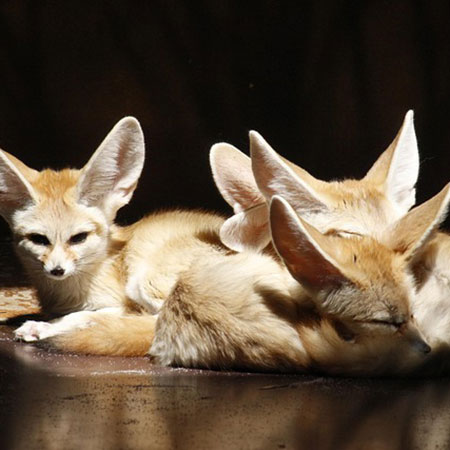Scientific Name: Vulpes zerda
Habitat: Arid desert regions, primarily the Sahara Desert in North Africa. They live in sandy areas with sparse vegetation and often dig burrows for shelter
Diet: Herbivorous – Arid desert regions, primarily the Sahara Desert in North Africa. They live in sandy areas with sparse vegetation and often dig burrows for shelter
About the Fennic Fox
The Fennec Fox is the smallest member of the canine family, best known for its enormous ears and nocturnal lifestyle. Native to the arid deserts of North Africa, it has adapted remarkably to extreme temperatures and limited water. With a sandy-colored coat that helps reflect sunlight and blend into the desert surroundings, the Fennec Fox is both elusive and captivating.
Unique Features
Oversized ears (up to 6 inches long) help dissipate heat and enhance hearing to detect prey underground.
Thick fur protects against cold desert nights and reflects heat during the day.
Hairy footpads provide traction in the sand and insulation from hot surfaces.
Burrowing behavior allows them to create complex dens that stay cool during the day.
Interesting Facts
Fennec Foxes can jump up to 2 feet vertically and 4 feet horizontally, making them agile hunters.
Despite living in the desert, they rarely need to drink water, getting moisture from food.
They are highly social, often living in family groups of up to 10.
Their large ears can rotate independently, helping them pinpoint prey locations with precision
Conservation Status
The Fennec Fox is currently listed as Least Concern by the IUCN Red List. While not considered endangered, it faces threats from habitat loss, pet trade capture, and human encroachment. Conservation efforts focus on monitoring wild populations and protecting their desert habitats.




